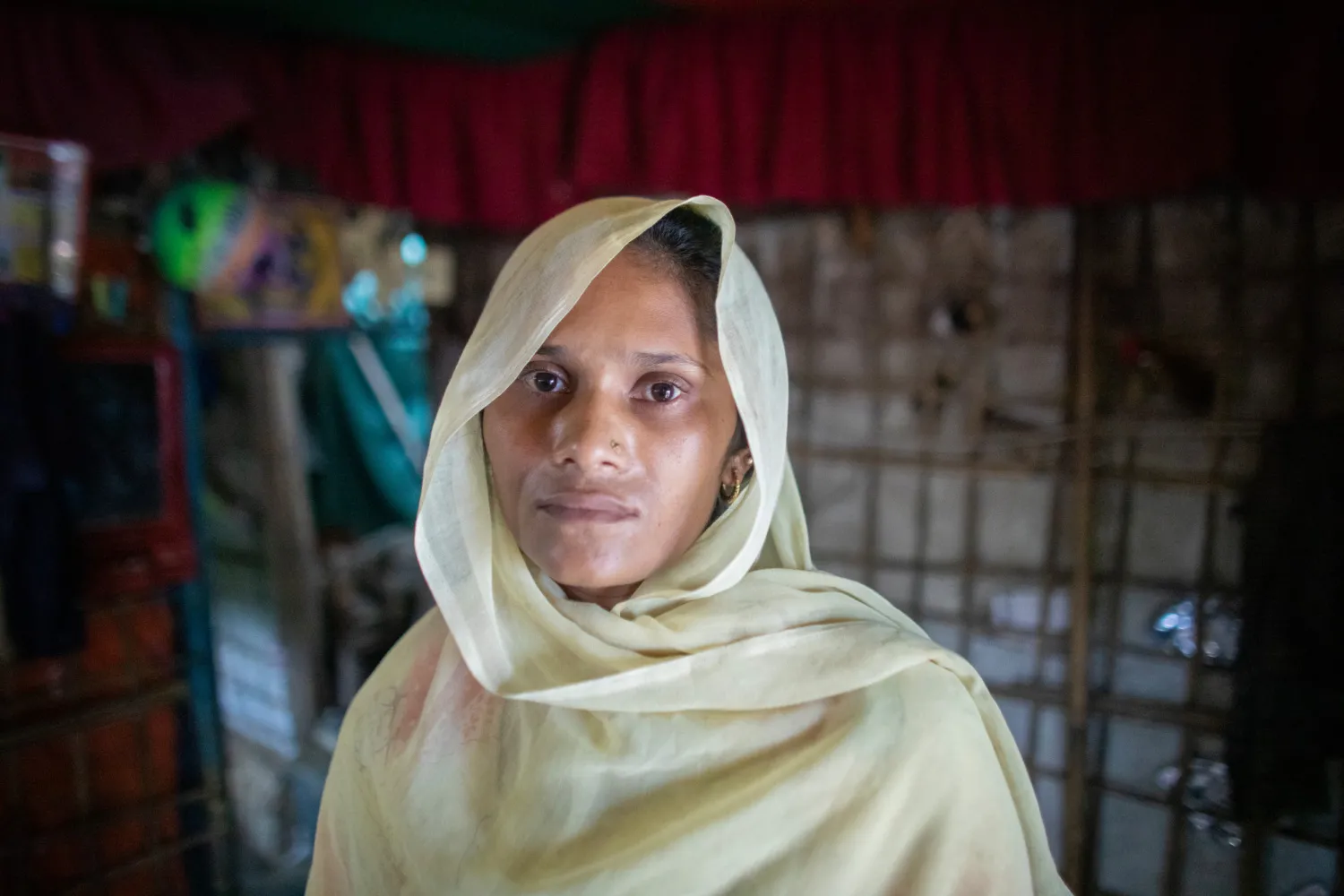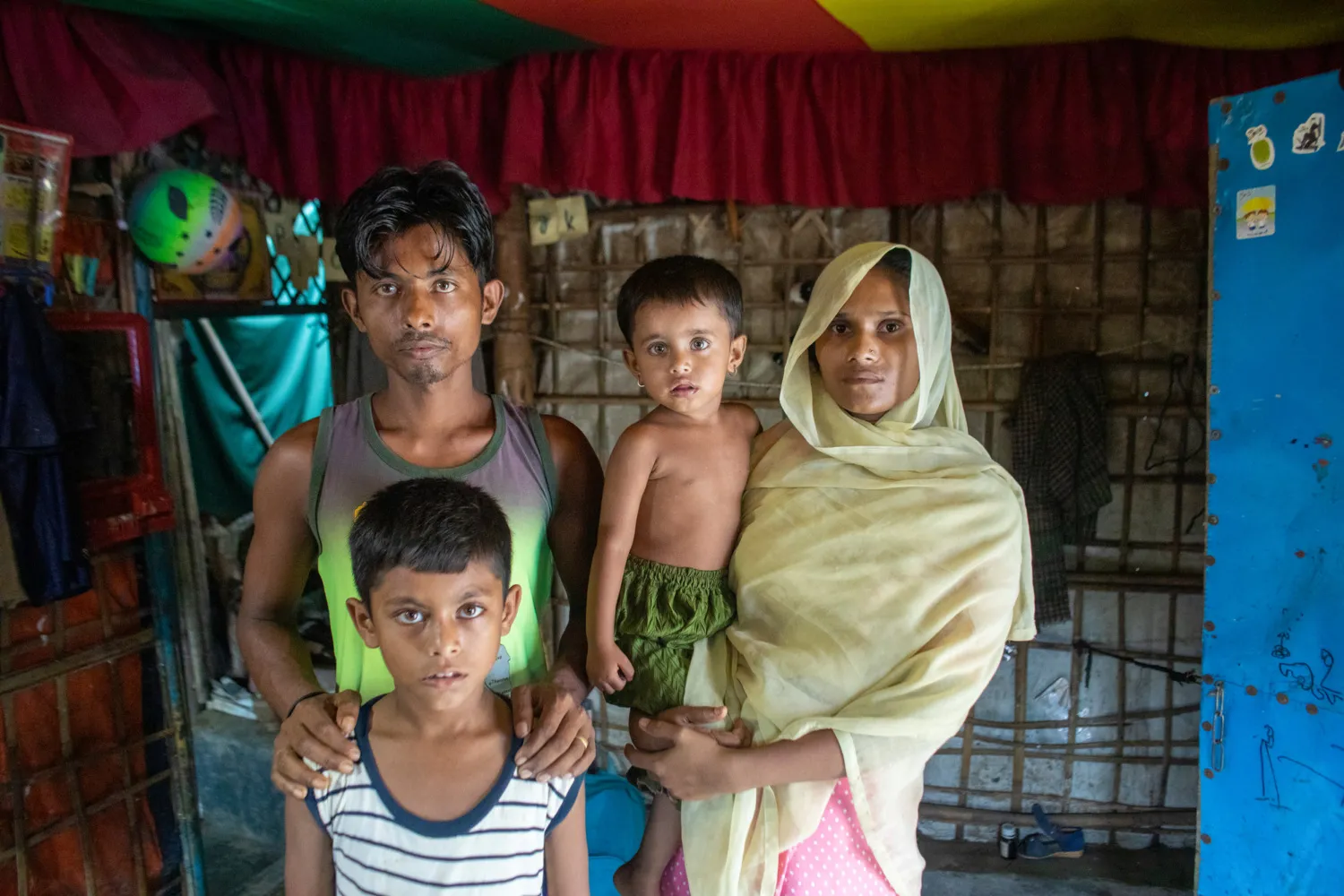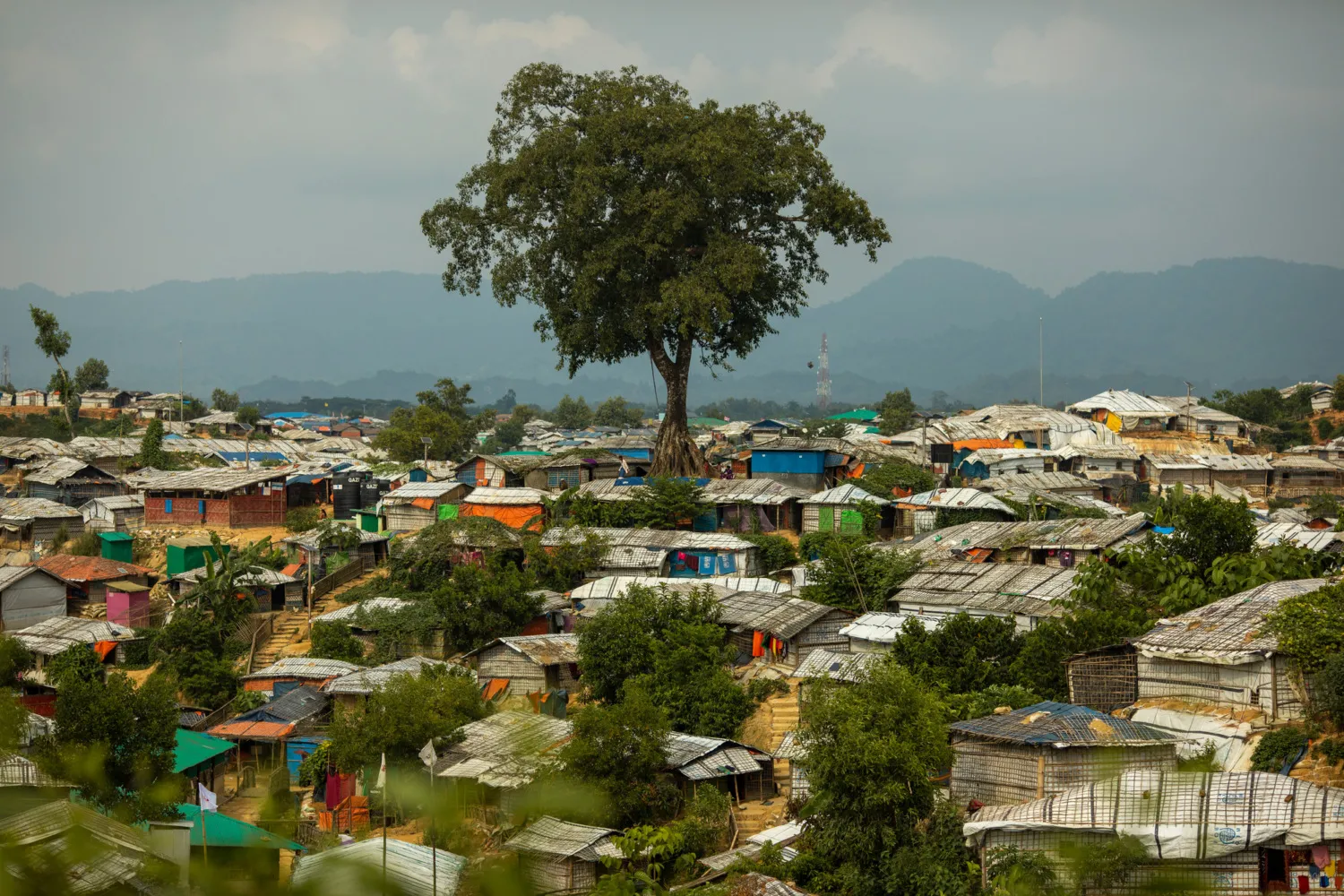Nearly one million Rohingya refugees have fled to Bangladesh since 2017 after violence escalated in Myanmar. The Rohingya people have faced decades of discrimination and statelessness, with a spike in violence in recent years.
Many other Rohingya share Jamanida’s experience.
“Almost all [women we spoke with in the camps] appear traumatized. Many trekked barefoot for days, through fields, jungles and rivers to get here,” former CARE Bangladesh Country Director Zia Choudhury explained after hundreds of thousands of Rohingya refugees from Myanmar flooded into Bangladesh in late 2017 and early 2018.
As with many other refugee camps, conditions are dire, and resources are limited. Deepmala Mahla, CARE’s Regional Director for Asia, says homes are flimsy shelters made of bamboo with straw roofs. “The entire family lives in one room and they share all water and hygiene facilities, like taps to collect their drinking water, handwashing points, latrines, which means not only are people using a single facility, they are overcrowded.”
While these conditions are always a health risk, they are particularly concerning during the coronavirus pandemic and could trigger an outbreak. Although Cox’s Bazar has been under lockdown since March, the virus was detected in the camps in May. As of June 15, there were 38 positive COVID-19 cases and two deaths in the camp.
Health services are limited and there are no intensive care beds in the camp.



